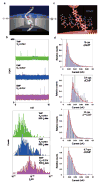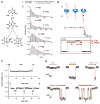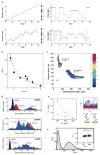Challenges in DNA motion control and sequence readout using nanopore devices
- PMID: 25642629
- PMCID: PMC4710574
- DOI: 10.1088/0957-4484/26/7/074004
Challenges in DNA motion control and sequence readout using nanopore devices
Abstract
Nanopores are being hailed as a potential next-generation DNA sequencer that could provide cheap, high-throughput DNA analysis. In this review we present a detailed summary of the various sensing techniques being investigated for use in DNA sequencing and mapping applications. A crucial impasse to the success of nanopores as a reliable DNA analysis tool is the fast and stochastic nature of DNA translocation. We discuss the incorporation of biological motors to step DNA through a pore base-by-base, as well as the many experimental modifications attempted for the purpose of slowing and controlling DNA transport.
Figures






References
Publication types
MeSH terms
Substances
Grants and funding
LinkOut - more resources
Full Text Sources
Other Literature Sources
